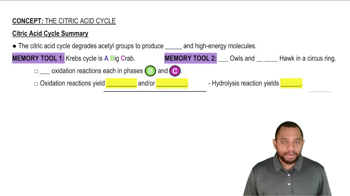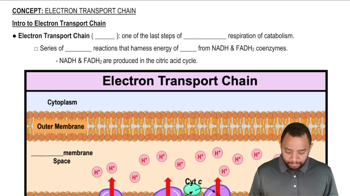Refer to the diagram of the citric acid cycle in Figure 18.13 to answer each of the following:
b. How is the number of carbon atoms decreased?
 Verified step by step guidance
Verified step by step guidance Verified video answer for a similar problem:
Verified video answer for a similar problem:



 :50m
:50mMaster Phase A - Citrate Formation Concept 1 with a bite sized video explanation from Jules
Start learning